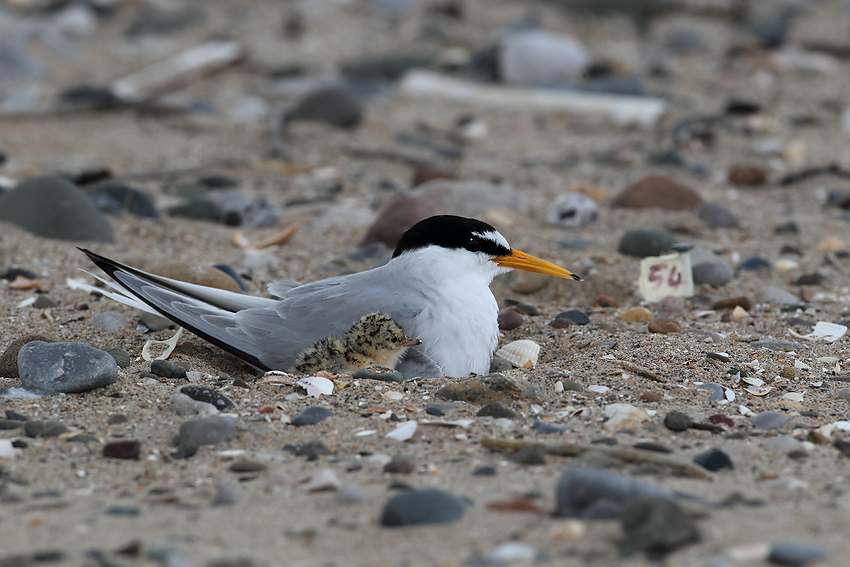Biodiversity
Related Links
Latest News
A Starring Role for Nantclwyd’s Lesser Horseshoe Bats
22.05.2015
Living Landscape Brought Back to Life
05.12.2014
More Information
To find out what is being done to help little terns in Denbighshire, visit our project pages. You can also read about life at the little tern colony in our newsletter.
Facebook Page
Little tern
The little tern is a small migratory seabird that makes the long journey from West Africa to Denbighshire every year to nest on the same patch of shingle at Gronant Dunes.
Description and identification: The little tern is the smallest of five tern species that breed in the UK. It has a slender, stream-lined body, black head with a white forehead and distinctive black-tipped yellow beak. It has a shorter tail than other tern species, and narrow pointed wings with a wingspan of 45-55cm.
Habitat: In the breeding season little terns inhabit coastal areas including estuaries, coastal lagoons and inlets. They nest on bare or sparsely-vegetated islands, beaches and spits. Once breeding is complete, the birds migrate long distances to their wintering grounds which include tidal creeks, lagoons and saltpans.
Diet: Little terns feed in shallow coastal waters where they catch small fish and invertebrates. They hover above the water, often just a few centimetres deep, before plunge-diving to catch their prey.
 Ecology and reproduction: The birds begin arriving at their breeding ground in May. Courtship is initiated by the male, who presents the female with a fish. Should she accept his offer, the pair will raise a brood of one to three young. The eggs are well camouflaged in the nest, which is a shallow scrape on the bare sandy or shingle of the beach above the high-tide line. Both parents incubate the eggs and feed the young. By August the colony has dispersed and the birds make their way to their wintering grounds in Africa. The average lifespan is 12 years.
Ecology and reproduction: The birds begin arriving at their breeding ground in May. Courtship is initiated by the male, who presents the female with a fish. Should she accept his offer, the pair will raise a brood of one to three young. The eggs are well camouflaged in the nest, which is a shallow scrape on the bare sandy or shingle of the beach above the high-tide line. Both parents incubate the eggs and feed the young. By August the colony has dispersed and the birds make their way to their wintering grounds in Africa. The average lifespan is 12 years.
Distribution: The little tern has a very large range. It breeds in Eurasia and parts of Australasia and winters in Southern Europe, South Asia, Africa and Australasia. In the UK there are a number of breeding colonies of little tern, mainly on eastern coasts. The only breeding colony in Wales is at Gronant Dunes in Denbighshire.
Threats: The main threat to little terns is loss of habitat due to development along the coast. They are also highly susceptible to disturbance by humans and dogs. Predation, flooding of nests by exceptionally high tides and poor weather conditions can seriously damage breeding success in any particular year. Globally little tern populations are decreasing.
Status: The little tern is protected under UK and European law and is a priority for conservation action in Denbighshire.



